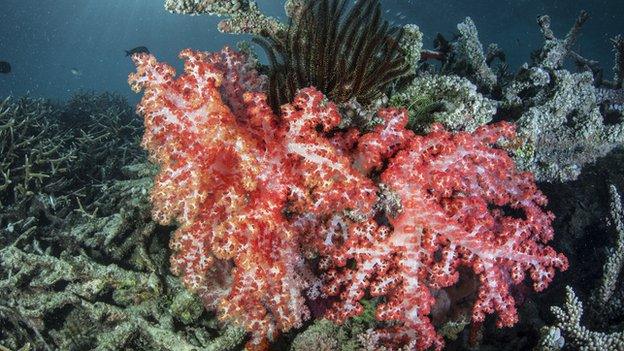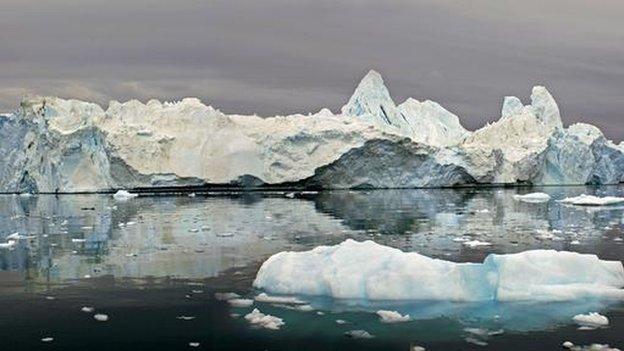Climate report: Creating a sense of urgency or alarm?
- Published

Corals are particularly vulnerable to the effects of ocean acidification
The cool blue cover of the latest IPCC report on the impacts of climate change belies the rather hot stuff within.
Perhaps taking inspiration from their neon loving Japanese hosts, the report is heavy with reds, greens and yellows.
That is, until you get to the box detailing the human interference with the climate system. Here the IPCC outline "five integrative reasons for concern" summarising key risks across sectors and regions.
These include the risks faced by unique and threatened ecosystems, extreme weather, and the risk of large scale singular events.
First introduced in the third assessment report in 2001, the reasons for concern became well known because of an associated diagram, that became known as the "burning embers".
This chart, showing serious impacts for modest amounts of warming, was controversially dropped from the 2007 assessment, reportedly because some governments found it too alarming.
Now it's back and the hue of the embers has deepened in the intervening period.
To illustrate the fact that time has passed and low levels of warming pose significant risks, the authors have resorted to purple.
This new colour has been added to signify a risk that is "very high".
So for unique and threatened systems, like coral or Arctic ice, once you get slightly above 2C, you're into the purple patch.
This is also the case for the risk described as "distribution of impacts". This means that threats are often unevenly distributed and hurt poor people more.
Above 2C the report warns these uneven distributions get worse, but they don't go purple until 5C of warming.
So is this an alarmist step?
"The colour of the temperature, well I come from Australia and we had to change the colour of our met reporting last year. That in itself also sent a message," said Habiba Gitay from the World Bank, who contributed to the report.
"It adds to the urgency rather than the alarm."
Name removed from report
The issue of alarmism was raised before the meeting by Prof Richard Tol, an economist who has long been a firm favourite of those who question the scale of climate impacts.

Arctic ice is also under threat
Prof Tol has previously published research showing that climate change may have some benefits at lower levels of warming.
Speaking to the BBC, he said he had asked for his name to be removed from the list of drafting authors as he believed the report was overly alarming.
However, he did attend the meeting here in Yokohama and by all accounts made a positive contribution on many issues.
So how do you reconcile the world of purple embers with the one of warming benefits?
According to Dr Chris Field, there will be benefits, but not necessarily along the lines of vineyards in the north of Scotland.
He says that adapting to the threats that are coming down the line is a real challenge, but one that we have no choice but to rise to.
"We can use approaches to managing climate change as a way to build a better world, a world that is more robust, more secure, more vibrant.
"I think climate can help us find the best part of ourselves. I think that there are opportunities to capitalise on it, and one of the things we need to do is open our eyes to the balances.
"If we're dumb, it's a serious, serious problem, and if we are smart it a serious problem, but one that we can manage."